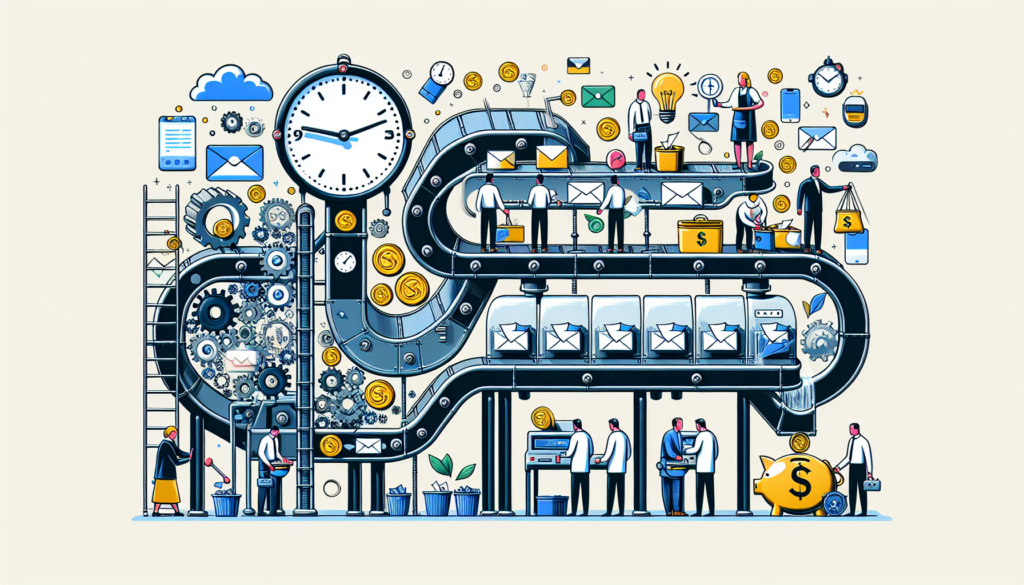Email marketing remains one of the most effective and versatile communication channels for organizations, combining personalized direct reach with unmatched cost efficiency. However, the increasing demands for relevant and personalized content imply a significant investment of time and resources, an equation optimized through the correct implementation of email marketing automation.
Email Marketing Automation Fundamentals
Email marketing automation is based on using software and technologies that allow companies to send scheduled emails or those triggered by certain user actions. This not only increases operational efficiency but also allows brands to maintain continuous and meaningful contact with their audience.
Key Concepts and Advantages
- Advanced Segmentation: Through the collection and analysis of data, emails can be targeted to specific audience segments, increasing the relevance and effectiveness of the message.
- Dynamic Personalization: Automation systems can personalize email content in real time based on the recipient’s behavior or profile.
- Scalability: As the subscriber base grows, automation allows keeping pace without exponentially increasing the associated costs.
Technical Aspects and Innovative Tools
For the effective implementation of an automation strategy, it is necessary to understand and handle a series of tools and technical processes that dictate the campaigns’ reach and efficiency.
Automation Platforms
Platforms such as MailChimp, SendinBlue, or ActiveCampaign provide advanced automation functionalities. These tools offer integration with CRMs, predictive analytics, and the ability to execute complex workflows that trigger actions based on user behavior.
Big Data and Machine Learning
The application of big data and machine learning in email marketing automation allows predicting consumer behavior, personalizing communications at an individualized level, and optimizing the timing of email sending.
A/B Testing and Optimization
A/B testing is a common practice in which two versions of an email are compared to determine which performs better. This allows marketers to fine-tune their campaigns based on real audience data.
Practical Applications
Automated Transactional Emails
The confirmation of a purchase or the follow-up of an order are examples of transactional emails that can be automated to improve the customer experience. These emails are triggered by a specific action and are fundamental in building trust and satisfaction.
Lead Nurturing
Through automated sequences, companies can educate and maintain the interest of potential customers (leads), guiding them through the sales funnel with relevant information and offers.
Abandoned Cart Recovery
Sending a reminder email to a customer who has not completed a purchase is an effective strategy for recovering sales. Automating this process ensures that no potential customer is overlooked and maximizes conversions.
Relevant Case Studies
In the field of case studies, companies like Amazon use recommendation algorithms to generate personalized emails based on the customer’s browsing and purchase history. Another emblematic case is Netflix, which sends content recommendations to its subscribers based on their preferences and viewing habits.
Challenges and Future Directions
Concerns about data privacy and new regulations such as the GDPR pose challenges that demand creative and ethical solutions in email marketing automation. On the other hand, artificial intelligence continues to pave the way for greater personalization and prediction of behaviors, possibly towards an era where machine-to-person communication is indistinguishable from human-to-human communication.
Innovations and Potential Advances
- Hyper-Personalization: The evolution towards emails that seem written specifically for each individual.
- AI-Based Automation: Content generation enhanced with AI capable of writing creative and personalized copies.
- Privacy and Ethics: Tools that ensure user privacy without compromising the advantages of personalization.
By addressing the technical sophistication and strategic applications of email marketing automation, organizations can not only save time and resources but also strengthen their relationship with consumers. The key is to ingeniously balance technical efficiency with a customer experience-centered perspective.

